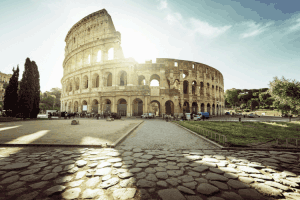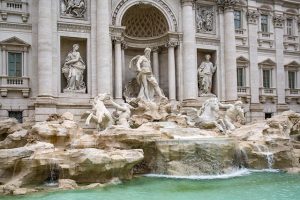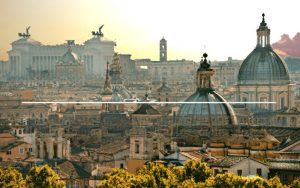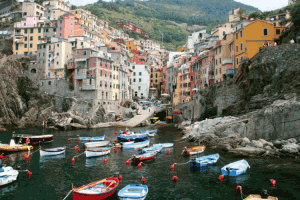Italy is one of the most fascinating countries in the world to visit. It is blessed and stuffed with amazing attractions including architectural marvels which you encounter during your Italy travel.
There are some interesting things you did not know about Italy. Below listed are some of the unknown Italian facts which you will come across on your trip to Italy. Get the best of Italy travel information during your Italy holidays.
What is Italy Unique For?
Italy stands out from other countries in many regards thanks to its rich history, culture, art, food and beautiful landscapes. There are several things that make Italy truly unique.
Firstly, Italy has more UNESCO World Heritage sites than any other country on Earth. Its 55 cultural and natural sites contain some of humanity’s most significant and irreplaceable treasures, telling the epic story of human civilization.
Italy also gave birth to the Renaissance period, a time marked by extraordinary cultural achievements starting in the 1400s. Italian art and architecture from this period became the fundamental foundation for all Western art that followed. The artistic legacy of Leonardo da Vinci, Michelangelo and Raphael remains completely unparalleled.
Then there’s the food. From pasta and pizza to wine, cheese and olive oil, Italy produces some of the most popular cuisines on the planet. Italian cuisine is distinguished by its simplicity featuring just a few quality ingredients that allow their natural flavors to shine.
And finally, Italy contains more diversity in a small geographic area than most other nations. Traveling just a short distance one can experience Alpine peaks, volcanic islands, miles of coastline and rolling countrysides rich with vineyards and olive groves. This diversity in landscapes, cultures and traditions is what makes Italy a one-of-a-kind destination.
Italy’s uniqueness extends beyond its tangible heritage. The country’s distinctive character is shaped by:
- Being one of Western Europe’s youngest countries, only unified in 1861
- Housing four of the world’s ten oldest universities
- Maintaining strong regional identities that contribute to its cultural mosaic
- Preserving ancient traditions while embracing modern innovations
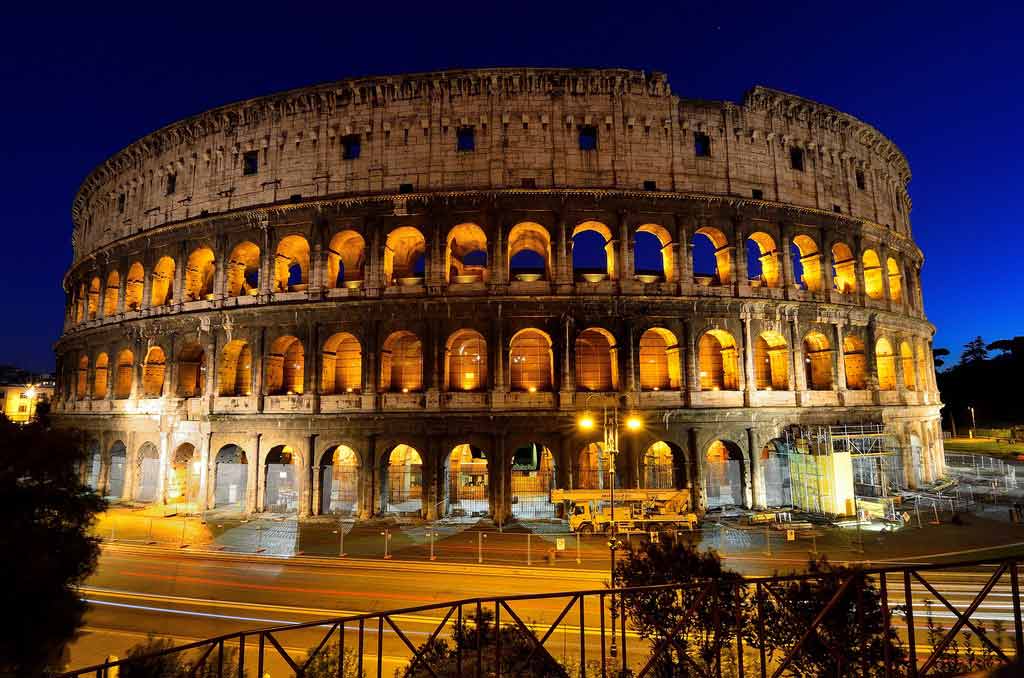
Facts about Italy:
1.The origins of Italy’s name are unknown
Italy refers to the land of young cattle. Many researchers and historians believe that Southern Italian tribes were represented by a bull from where this name was derived, while many disagree and state that the name has been derived from the name Italus, which means an early king of the region. The origins of Italy’s name are still not clear. The Italian Republic is the name used to represent Italy on formal documents.
2. Italy gets more than 57 million tourists each year
Tourism remains crucial to Italy’s economy, with latest figures showing a significant increase in visitors. Major cities like Rome, Florence, Milan, and Venice continue to be the biggest draws for international travelers.
3.Italy occupies the 4th place of the most populated place in Europe
Thanks to the high birth rate and the low death rate prevailing in Italy since generations, Italy is home to a population of approximately 60 million, which is 320 people residing for every square mile in Italy. Quite big as compared to its small land size.
4.The Eternal City and two independent states
Italy’s capital Rome is considered to be an eternal city which is almost 3000 years old. Also, Italy houses 2 independent states namely the Vatican City and the Republic of San Martin. The Vatican City, in fact, has its own radio, TV stations, stamps, Phone Company, money, and army. Spread over an area of 108.7 acres, this independent national has the authority to lock its gates during the night.
5.Earthquakes are frequent visitors in Italy
Due to its position on the fault line, Italy is frequently visited by earthquakes. Almost, three volcanoes have erupted here in the last century namely Etna, Stromboli, and Vesuvius.
6.Blessed with masterpieces on every mile
Italy houses innumerable masterpieces per mile of land area. One of the popular attractions includes the Leaning Tower of Pisa which was built in the year 1173 and began to lean immediately after its construction. Post reconstruction work which concluded in the same year, the experts have declared that the tower would be stable for the next 200 years.
7.Italy is home to ancient fountains which are probably a century year old
Italy is home to several antique fountains with almost 50 fountains placed in Rome. The small ones like Nasoni are excluded from this list as they are considered small waterspouts utilised by pedestrians. The ancient Trevi fountain was built by Pope Urban VIII in the mid-1600s. There is a local belief that visitors who throw a coin in the Trevi fountain can be sure of visiting Rome again pretty soon. These coins are used for the maintenance of the fountain and the foreign coins are donated to Red Cross Foundation.
Also Read: Best Fountains in Italy
8.It is home to the tallest mountain in Europe
The Mont Blanc often referred to as the White Mountain in English is the tallest mountain standing in Europe. It is a branch of the Alps family which is placed on the border between Italy and France. Almost 4/5th of Italy is blessed with beautiful hills and mountains.
9.The Italian language origins
The Italian language shares the same grammatical system as the Latin language. More than 90% words are adopted from the Latin language.
10.Soccer is played with a lot of passion in Italy
Soccer is one of the dedicated and organized sports played in Italy. The crazy fans are referred as Tifosi, which means typhus carriers. People love this game and it is one of the national pastimes of the population here. The Italians have won the Soccer World Cup 4 times in a sequel: 1934, 1938, 1982, and 1986.
11.Welcome to the Land of Style and Sport
Some of the most popular brands in the world like Gucci, Prada, Armani, and Versace are owned by Italian fashion leaders. Come home to the land of fashion brands. Italy also houses production houses of Sports cars like Ferrari and Lamborghini.
12.Christmas is one of the widely celebrated and the biggest holiday in Italy
Come Christmas, the Italians are in a totally different mood to celebrate. The vivid celebrations go on till 6th January of the corresponding year. 6th January is the date of Epiphany or the day where the three wise men visited Jesus in the manger.
13.Musical notations are referenced only in the Italian language
Popular musical notations like Adagio, Allegro, etc. are Italian words which indicate tempo. It originated when an Italian named Guido d’Arezzo invented a system to denote these musical notations.
14.Pasta was not consumed with tomato sauce till the 16th century in Italy
You won’t believe this one, but it is true. Pasta was preferred to be consumed with a round of honey and sugar centuries back. Today there are more than 500 varieties of pasta served in Italy.
15.The history of the Pizza invention is unclear
You may not believe this one, but this is true. No one has any clue when the Italians created their famous Pizza. All they know is that Naples has made this dish popular all over the world.
16.The outlandish consumption of Pasta
When you have more than 140 varieties of Pasta available, don’t be surprised by this amount. On an average, every Italian consumes around 25kg/year of Pasta. Many kinds of Pasta are produced regionally. The concentration is higher in the south and central Italy rather than in the northern side. Risotto and Polenta are more preferred options in the north.
17.The delicious Italian desserts
Italian cuisine consists of an amazing variety of traditional and regional desserts. One of the most popular ones includes the Tiramisu which was created in the 1970s. Tiramisu means pick me up and the name was derived due to its two main ingredients; cocoa and coffee.
18.The Italian people
Italy is the birthplace of several popular authors like Giovanni Boccaccio, Francesco Petrarch, and Dante Alighieri. More than 85% of the Italian population follow the Catholic faith. The remaining 15% consists of Muslims, Protestants, and Jews. Many Italian names end with an ‘I’ or an ‘O’, with the name Russo being the most common surname in Italy.
19.The Land of emigration
Southern Italy is a land of emigration since ages. Italian citizens outside and inside the country are almost equal: 60 million each. Italians have immigrated to North and South America, Australia, and Western Europe in search of a better life, spreading the Italian cuisine and culture, and other reasons.
20. Italy has the most UNESCO World Heritage sites
Italy has the most UNESCO World Heritage sites With 55 UNESCO World Heritage sites, Italy has more than any other country in the world. These sites include historic city centers, archaeological ruins, cathedrals, villas and gardens. Popular sites include the Colosseum, Pompeii, and the city of Venice.
21. Espresso is the national coffee
Espresso is the national coffee Italians love their espresso. The strong, concentrated coffee is considered Italy’s national drink, with the country consuming around 5.8 kg of coffee per capita annually, one of the highest rates in the world. An espresso is the customary way to end a restaurant meal.
22. Italy has a free wine fountain
Italy has a free wine fountain The town of Caldari di Ortona in central Italy has a free, 24-hour wine “fountain” located along a public street. It was opened in 2010 and gives locals and tourists access to red or white wine from the fountain’s spouts.
23. No public beaches in Italy until the 20th century
No public beaches in Italy until the 20th century Though Italy is surrounded by water, there were no public beaches until the early 20th century. Private beaches were opened to the public by Mussolini to show his support for the working class. Now Italy has over 4,700 miles of coastline and beaches.
24. First university in the Western world
First university in the Western world The University of Bologna, founded in 1088, is considered the first university established in the Western world. During its early years, it mainly focused on teaching canon law and civil law. The university continues operating today with over 85,000 students enrolled.
25. Venice was founded as a refuge from barbarians
Venice was founded as a refuge from barbarians Venice was founded in the 5th century AD by mainlanders seeking refuge from barbarian invasions after the fall of the Roman Empire. The group of small islands formed an isolated, easily defended community that became Venice. The location provided protection for nearly 1,000 years.
26. Italians have strict coffee rules
You might not believe it, but ordering a cappuccino after 11 AM is considered a tourist mistake in Italy. Locals only drink milky coffee at breakfast, preferring straight espresso throughout the day. Each Italian consumes approximately 37 kg of coffee annually.
27. There’s a free wine fountain in Italy
In the town of Caldari di Ortona, you’ll find something unusual – a fountain that dispenses free wine 24 hours a day. This unique attraction was opened in 2010 and offers both red and white wine options to visitors.
28. Cats have special rights in Rome
Rome’s cats are considered part of the city’s bio-cultural heritage. There are approximately 300,000 cats in Rome, and they’re the only residents allowed to freely roam ancient ruins. Harming a cat can result in hefty fines and even imprisonment.
29. Italian police use some impressive vehicles
The Italian police force uses Lamborghinis, but not for regular patrols. These super-fast cars are specifically used for emergency medical transportation, such as urgent organ delivery to hospitals.
30. The country has Europe’s oldest population
Italy’s population has an average age of 45.7 years, making it Europe’s oldest. Only Japan has an older population globally. The Italian island of Sardinia is even recognized as one of the world’s five “Blue Zones” where people live the longest.
31. There are over 350 types of pasta in Italy
While you might know spaghetti and penne, Italy actually has more than 350 different pasta varieties. Each shape is designed to hold specific types of sauces, and many are unique to particular regions of the country.
32. Italian is not the only official language
Surprisingly, Italy recognizes 12 official minority languages alongside Italian. These include Albanian, Catalan, German, Greek, and Slovenian. Many of these languages are specific to certain regions and help preserve local cultural heritage.
